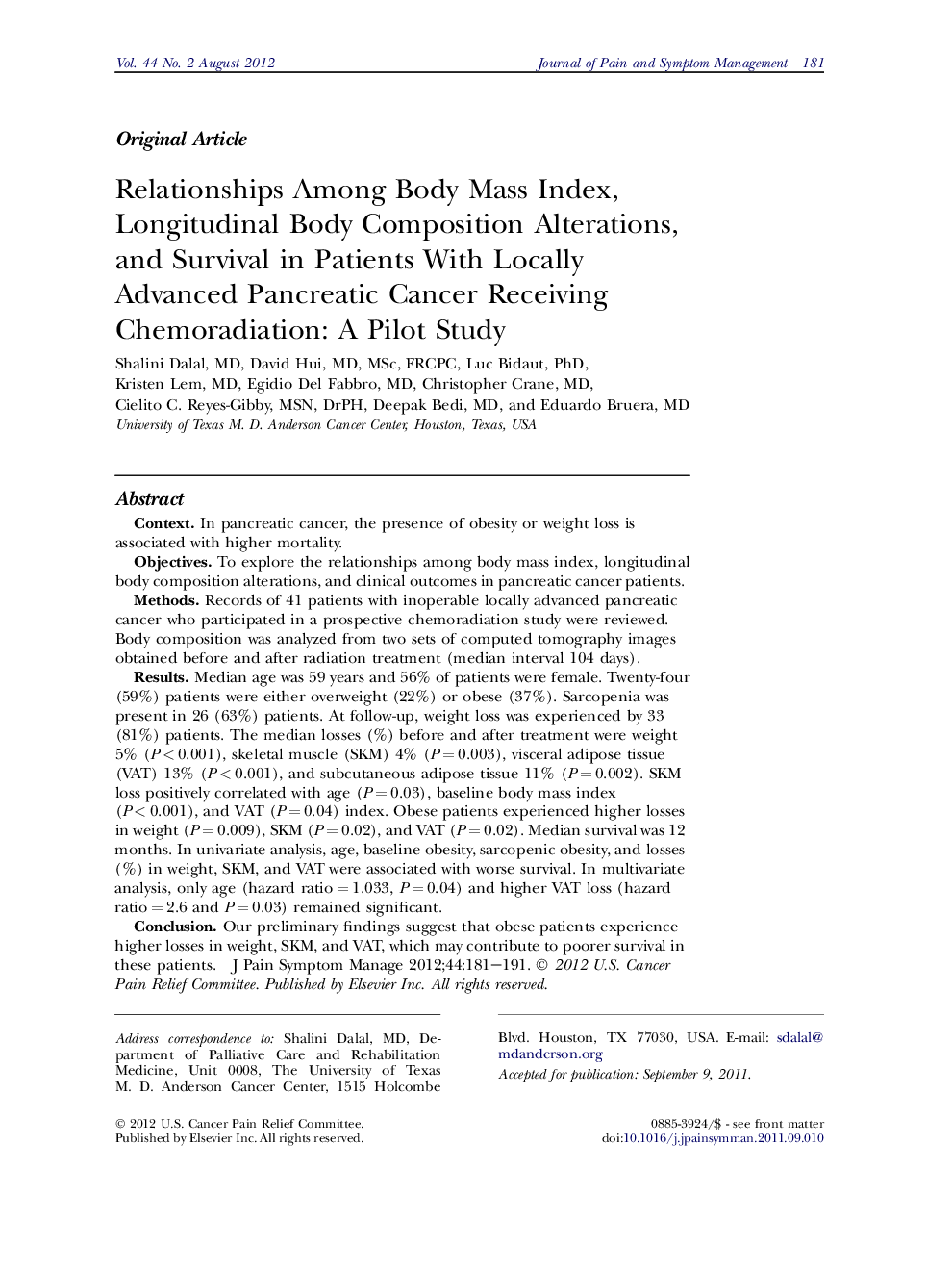| Article ID | Journal | Published Year | Pages | File Type |
|---|---|---|---|---|
| 2729790 | Journal of Pain and Symptom Management | 2012 | 11 Pages |
ContextIn pancreatic cancer, the presence of obesity or weight loss is associated with higher mortality.ObjectivesTo explore the relationships among body mass index, longitudinal body composition alterations, and clinical outcomes in pancreatic cancer patients.MethodsRecords of 41 patients with inoperable locally advanced pancreatic cancer who participated in a prospective chemoradiation study were reviewed. Body composition was analyzed from two sets of computed tomography images obtained before and after radiation treatment (median interval 104 days).ResultsMedian age was 59 years and 56% of patients were female. Twenty-four (59%) patients were either overweight (22%) or obese (37%). Sarcopenia was present in 26 (63%) patients. At follow-up, weight loss was experienced by 33 (81%) patients. The median losses (%) before and after treatment were weight 5% (P < 0.001), skeletal muscle (SKM) 4% (P = 0.003), visceral adipose tissue (VAT) 13% (P < 0.001), and subcutaneous adipose tissue 11% (P = 0.002). SKM loss positively correlated with age (P = 0.03), baseline body mass index (P < 0.001), and VAT (P = 0.04) index. Obese patients experienced higher losses in weight (P = 0.009), SKM (P = 0.02), and VAT (P = 0.02). Median survival was 12 months. In univariate analysis, age, baseline obesity, sarcopenic obesity, and losses (%) in weight, SKM, and VAT were associated with worse survival. In multivariate analysis, only age (hazard ratio = 1.033, P = 0.04) and higher VAT loss (hazard ratio = 2.6 and P = 0.03) remained significant.ConclusionOur preliminary findings suggest that obese patients experience higher losses in weight, SKM, and VAT, which may contribute to poorer survival in these patients.
